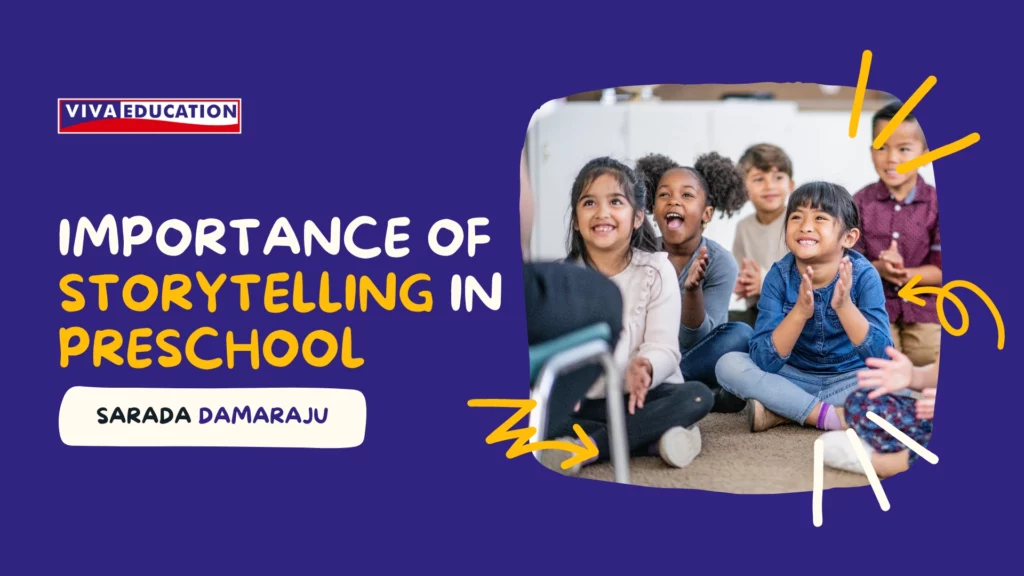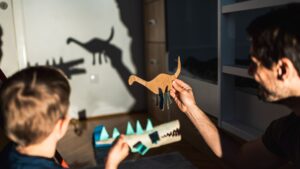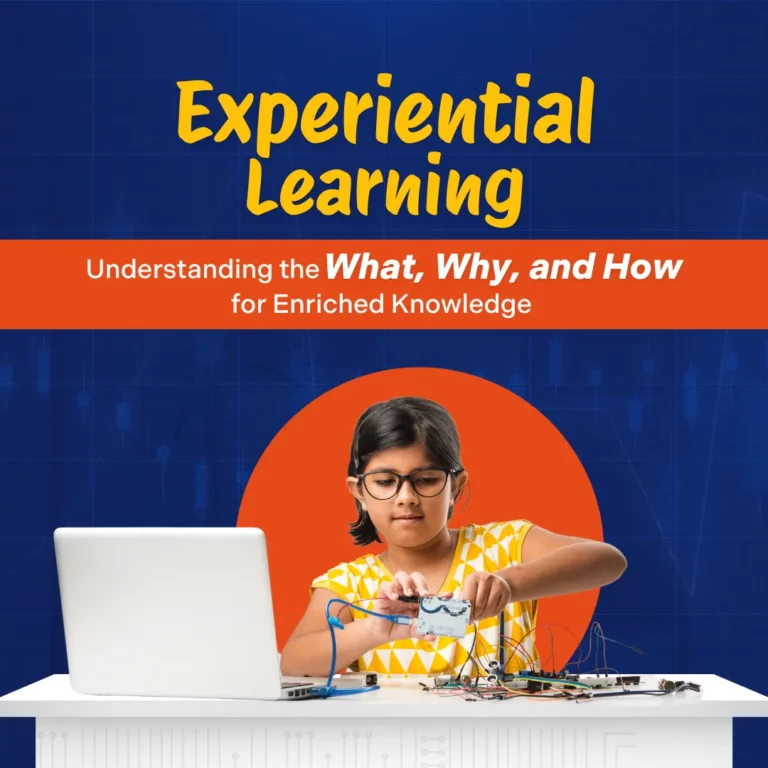Importance of Storytelling in Preschool
- Teachers
- February 7, 2024
- Sarada Damaraju

Stories play a very important role in a child’s development years. Caregivers begin telling them stories from a very young age. For many children, stories become part of their daily routine – a story to eat, a story to sleep, and a story to calm down the tantrums. The stories are mostly told in the mother tongue, which makes it easier for the child to comprehend and repeat or re-narrate them.
Once the child enters school, the entire process of storytelling takes a different dimension. The first change is that the language often switches to English (usually). The child takes time to adjust to this change, but as the teacher uses lots of gestures, story cards, and props, they quickly get used to it. Repetition becomes easier than narration, but this too comes with time.
Stories help children develop many skills in a fun way.
1. Vocabulary and Communication Skills: The child listens to the words used in the story, remembers them, and tries to use them in day-to-day communication. It begins with remembering key phrases like “he huffs and puffs and bring the house down” or “not too big, not too small but just right” and with time, the child is able to tell the story in their own words.
2. Imagination Skills: The child begins imagining themselves as the character they associate with. They try to imagine the setting, the characters, the plot. To give wings to that imagination, a teacher needs to use props, voice modulation, music, gestures, etc. The child becomes the butterfly, the lion, the princess, the rain… and begins to develop a story of their own.

3. Moral Skills: Though the key objective of storytelling is language development, and at the preprimary level, teachers refrain from giving a moral to each story as a tagline, children do pick up morals unknowingly and imbibe them. Like the snake was killed because it used to eat up the crow’s eggs, which is not right or maybe right, the hare was praised by the animals because it helped them get rid of the cruel lion.
The students understand the concept of good and bad; right and wrong in a basic manner.
4. Introduces Them to New Ideas and Places: Not every story shared in the classroom involves themes, locations, and characters that are familiar to the children. But the stories help them learn about new places, people, and behavior. They learn about fictional characters like mermaids, fairies, and talking animals and trees. Sitting in a hot place, they learn and imagine a place with snowfall. They begin to understand the concept of palaces and castles, pies and tarts, forests and deserts, fairies, elves and demons, etc.

5. Develops Emotional Intelligence: Children hear numerous stories, each presenting unique situations, challenges, and solutions. Listening to such stories helps to understand new situations and new thoughts and perspectives. This helps children develop sympathy, empathy, tolerance, patience, resilience. Children also learn to identify their own emotions like happiness, anger, jealousy, sadness, and fear. Such stories help them become emotionally strong and also prepare them for unforeseen eventualities.
6. Critical Thinking: Stories sometimes pose ethical dilemmas that may trigger the child’s thinking. Open-ended stories also help children develop critical thinking skills like what would happen next? Incomplete stories where the child has to come up with their own ending help them get into the shoes of the character, understand and interpret the premise of the situation, and come up with their own ending and how they would react under similar circumstances. Stories expose children to different ways of thinking, teaching them to think outside the box, weigh different options, and make thoughtful decisions.
7. Problem-Solving Skills: When children listen/read different stories, they begin to analyze the story and learn to comment on the actions of the characters. They learn to agree or disagree with the characters and also come up with their own logic of right or wrong. For example, “I wouldn’t have harmed the lamb. I would have helped the child to overcome their problem. I am so proud of the mouse…”
8. Team Building: Narrating/discussing/enacting the stories, children bond very well with each other. They brainstorm, argue, agree or disagree with each other but more importantly learn to deal with criticism, disagreement, and rejection/acceptance of ideas.
Stories should be an essential part of the teaching-learning process. The importance of recall memory cannot be denied, but stories do much more than that; they build character.
“We are storytelling creatures, and as children, we acquire language to tell those stories that we have inside us” – Jerome S. Bruner
For an excellent selection of preschool books, consider exploring Viva Education, renowned as the best preschool book publisher. Check out our engaging collection:




So, there is a long story behind the stories.